Table of contents
The brown seeds of the common flax ( Linum usitatissimum L.) are called linseed and the yellow seeds are called golden linseed ( golden linseed ).
Use in the kitchen
What does linseed taste like? When raw, linseed has a nutty, perhaps slightly oily aroma. The smell of the small, flat seeds can be rather unpleasant depending on how they are stored. There are brown and golden-yellow linseeds. Golden linseeds taste a little milder.
Flaxseeds are a popular muesli ingredient . They are also a component of the gluten-free and raw vegan Erb-Müesli, which also contains pseudocereals, seeds and golden millet . Try the Erb-Müesli plus oat flakes variant. Flaxseeds are also often used in baked goods, bread or rolls . When ground into flaxseed flour, they can partially replace other flours. Crackers, wraps, pancakes and even pizza dough can be made from flaxseed meal.
Can I eat flaxseed raw? Flaxseed is good to eat raw. Adults can eat 15-20 g of flaxseed per day, which is about 2 tablespoons. 2,11 Children are advised to eat smaller portion sizes and these should be cooked. Small children should not eat flaxseed. Read more about this in the following chapters.
How should you take flaxseed properly? Flaxseed swells up a lot, so you should always take it with plenty of liquid. You can leave it to swell (for a few hours or overnight) whole, crushed or ground.
In a vegan diet, ground linseed is a welcome egg substitute as a binding agent. To do this, mix the ground seeds with three parts water . Linseed makes a healthy topping for soups or smoothies. If you let them germinate for a few days, the sprouts make a varied, raw salad ingredient. It is also possible to enrich certain dishes with linseed. Sauces, casseroles or rice dishes get a pleasant nutty taste with the linseed. Crushed seeds are suitable for linseed pudding (with almond milk, oat milk ) and can be eaten with fruits such as bananas and apples .
The tender, soft, slightly bitter-tasting leaves and shoots of the common flax are used raw: for salads, herb mixtures or vegetable fillings. 3
Vegan recipe for salad with linseed sprouts
Ingredients (2 servings): 2 tbsp linseed, 1 spring onion, 100 g cherry tomatoes, 1 avocado, 150 g cooked black beans, 2 tbsp linseed oil, 2 tbsp lemon juice, 1 tsp mustard, salt ,pepper and fresh basil .
Preparation: Let the linseed germinate in a sprouting jar for about 3 days and rinse regularly with fresh water. Cut the spring onion into fine rings, quarter the cherry tomatoes and place them in a bowl together with the flesh of an avocado. Add the cooked black beans. For the dressing, mix the linseed oil, lemon juice and mustard. Season with salt and pepper and fresh basil and spread over the salad. Garnish the finished salad with the sprouts and enjoy fresh.
Recipe for linseed tea
To make linseed tea, pour 2 heaped teaspoons of whole linseeds into 250 ml of cold water and let it steep for 20 minutes. Stir occasionally to ensure that the linseeds can swell properly. After the steeping time, strain the grounds and drink the linseed tea slightly warmed. The swollen linseeds can be mixed into muesli.
Vegan recipes with linseed (raw) can be found under the note: " Recipes that have the most of this ingredient ".
| Not only vegans or vegetarians should read this: Vegans often eat unhealthily. Avoidable nutritional errors . |
Purchasing - Storage
Linseed can be bought at well-stocked supermarkets such as Coop, Migros, Rewe, Billa, Spar or Edeka . The usual packaging units are between 250 and 500 g. You can often choose between whole and ground linseed. At Volg, Aldi, Lidl, Denner and Hofer, linseed is often not part of the permanent range. Gold linseed is rarely found in supermarkets, it can mainly be purchased in health food stores, drugstores, smaller organic shops and in organic supermarkets such as Denn's Biomarkt or Alnatura .
However, linseed is available in stores all year round . For a residue-free product, we recommend purchasing organic linseed from controlled organic cultivation.
The availability of linseed varies depending on the size of the store, catchment area, etc. Our recorded food prices for the DA-CH countries can be found above under the ingredient image - and by clicking you can see their development at different suppliers.
Found in the wild
Flax is usually cultivated and rarely grows wild. 3 It is an annual, upright plant, 80-120 cm high, with narrow, grey-green leaves up to 2.5 cm long. Round seed capsules develop from the sky-blue, sometimes white, plate-shaped summer flowers. 4 The main flowering period of flax is from June to August. Young leaves and shoot tips are harvested from April to June. 3 Seeds are harvested from the end of July to mid-August. 24
When collecting different parts of flax plants, there is no particular risk of confusion with similar-looking poisonous plants.
Storage tips
Flaxseed should be stored in a dry, dark place. Crushed flaxseed in particular does not last long. These should be used up after six months at the latest. In the supermarket, crushed flaxseed is often treated with a protective gas and vacuum-packed. At home, it is best to take them out of the plastic packaging and put them in a dark, airtight container. If possible, you should only buy whole flaxseed and crush or grind them yourself if necessary. Whole, dried flaxseed can be kept for up to a year. You can generally tell whether the seeds are still fresh by the fact that they taste nutty and not bitter or rancid. The refrigerator is not suitable as a storage location due to the high humidity.
Ingredients - Nutritional values - Calories
100 g of flax seeds have an energy value of 534 kcal, the carbohydrate content is 29 g/100g and the protein content is 18 g/100g. 6 They are rich in fat (42 g/100g) andfiber (27 g/100g). 6
The oil contained in flaxseeds (35-45%) consists of 9-10% saturated fatty acids (palmitic acid and stearic acid) and about 20% monounsaturated fatty acids (mainly oleic acid). 20 According to the USDA, 100 g of flaxseeds contain 23 g of omega-3 fatty acids (alpha-linolenic acid, ALA), which cover 1141% of the daily requirement (at 2000 kcal). 6 Some sources even write up to 70%. 20 10 g daily is enough and provides more than 100% of the daily requirement of omega-3 fatty acids. Flaxseeds have the highest content of this essential fatty acid among seeds, followed by chia seeds (18 g/100g), walnuts (9.1 g/100g) and unpeeled hemp seeds (8.7 g/100g). 6 The ratio to the omega-6 fatty acid (linoleic acid) (5.9 g/100g) is 1:4 and is considered very good.
Thiamine (vitamin B1 ) is very well represented at 1.6 mg/100g and covers 149% of the daily requirement. Wheat germ (1.9 mg/100g) and rice flakes (1.5 mg/100g) have comparable values. Yeast flakes contain even more (41 mg/100g). 6
Manganese is also well represented at 2.5 mg/100g (daily requirement 124%), similar to lupine flour or psyllium husks . Wheat germ shows a much higher value at 13 mg. 6
Flax seeds contain all essential amino acids, being particularly rich in tryptophan, threonine and isoleucine . 6 However, flax seeds proteins are characterized by a high digestibility coefficient (89.6%) and a high biological value (77.4%). 20
The complete ingredients of linseed (raw), the coverage of the daily requirement and comparison values with other ingredients can be found in our nutrient tables. In the article Nutrients explained you will get a detailed insight into the topic.
Health effects
Flaxseeds are a rich source of omega-3 fatty acids (alpha-linolenic acid), the lignan secoisolariciresinol diglucoside (SDG) and dietary fiber. These compounds support health through their anti-inflammatory effects, antioxidant capacity and lipid-modulating properties. 16 Due to their nutritional properties, flaxseeds are being discussed as a potential 'functional food'. 19
Are flax seeds healthy? The recommended ratio between omega-6 fatty acids (linoleic acid, LA) and omega-3 fatty acids is 5:1. Since flax seeds contain a particularly high amount of omega-3, the ratio is almost the opposite here at 1:4. Flax seeds are an excellent source of omega-3 fatty acids, from which a healthy body can produce anti-inflammatory eicosapentaenoic acid (EPA) and docosahexaenoic acid (DHA) when the intake of omega-6 fatty acids is low. 7 Only chia seeds exceed this value at 1:3. Otherwise, practically all foods have more inflammation-promoting omega-6 fatty acids than omega-3.
The polyunsaturated omega-3 fatty acids are starting substances for structural lipids of cell membranes. They are important for the brain, nerve cells and the retina of the eyes. They also play an important role in inflammatory processes.
Are golden flaxseeds or brown flaxseeds healthier? Golden flaxseeds contain fewer omega-3 fatty acids (51%) than brown flaxseeds (59%). However, the yellow seeds have slightly more inflammatory omega-6 fatty acids and protein. We already eat too much of these two ingredients. However, since yellow flaxseed is grown in the USA, especially in North Dakota and South Dakota, and the main supplier, Canada, grows mainly brown flaxseeds, yellow flaxseeds are sold as more valuable or healthier - although the opposite is actually the case. Brown flaxseeds have a stronger antioxidant effect than yellow. Studies between 2001 and 2016 show different results, so each supplier can pick what they want. But the differences are relatively small, so it doesn't really matter. 1,18
Secondary plant substances
Many of the health effects of linseed can be attributed to the secondary plant substances it contains. Our article on secondary plant substances provides an overview of the classification of substance groups, their occurrence in foods and possible effects on humans. Linseed contains the following secondary plant substances, among others:
- Polyphenols : Lignans 16,20
However, it should be noted that the composition of secondary plant substances in linseed can vary depending on the variety, time of harvest and growing conditions. Therefore, quantities are only of limited use and should only be understood roughly.
Flaxseeds are the richest source of lignans in the plant world (up to 0.7-1.5% of the dry weight of the seed). The main source is the antioxidant secoisolariciresinol diglucoside (SDG). 20 Flaxseeds reduce blood sugar in people with type 2 diabetes or prediabetes. Preclinical studies have shown a blood sugar-lowering effect of SDG in animals with type 1 diabetes. Whether supplementation with SDG or flaxseed improves blood sugar control in people with type 1 diabetes is still unknown and may be the subject of future research. 16
Flaxseed lignans are nonsteroidal phytoestrogens that are chemically similar to mammalian estrogens and therefore have estrogen-like effects in mammals. Flaxseed has been studied extensively in animal studies for the treatment of a variety of cancers. In both animal and human studies, dietary flaxseed has shown significant protective effects against breast cancer. A systematic review of 10 human studies concluded that flaxseed reduced tumor growth in women with breast cancer and reduced the risk of developing breast cancer. The greatest effect was seen with 25 g of ground flaxseed, 16 which contradicts other recommendations. 2,11
Dangers - Intolerances - Side effects
Linseed can affect the absorption of medicines through the intestines. Therefore, there should be a time gap of at least two to three hours between consuming linseed and taking medicines. 8
Do linseeds contain hydrogen cyanide? As a naturally occurring plant ingredient, linseeds contain cyanogenic glycosides. The enzyme ß-glucosidase, which is also found in linseeds, releases cyanide when consumed (cyanides are the salts of hydrogen cyanide). Heating partially destroys the enzyme (ß-glucosidase), which is used to activate the cyanogenic glycosides to form hydrogen cyanide salts. 2 While hydrogen cyanide stimulates breathing and promotes digestion in small amounts, ingesting a sufficiently high dose can lead to acute poisoning (by blocking energy production). In the worst case, an overdose leads to respiratory insufficiency (respiratory failure) and death. However, the recommended maximum daily dose of linseeds does not pose any health risk. 2,4
Do flax seeds contain cadmium? Oilseeds such as flax seeds can absorb cadmium from the soil. Levels of cadmium above 1 mg/kg are not uncommon. To ensure that you do not consume too much cadmium, you should not eat more than 20 g of flax seeds per day. 11 However, scientists are not entirely in agreement about maximum consumption levels, with some classifying 50 g of flax seeds per day as safe for humans. 20 Occasionally consuming higher amounts is probably harmless.
Can you eat flaxseed during pregnancy? There is insufficient evidence to prove the safety of flaxseed during pregnancy. Studies on rats show that consuming flaxseed during pregnancy and breastfeeding has effects on offspring. 9 Currently, it is recommended to limit consumption to the usual amount of a maximum of 1 tablespoon (15 mg) per day. You should avoid linseed oil during pregnancy and breastfeeding, as there is evidence that linseed oil increases the risk of premature birth. 8,25 If you are constipated during pregnancy, you can also choose other natural remedies or seek advice from a specialist.
Folk medicine - natural medicine
The first mention of linseed was in the writings of Hippocrates around 500 BC as a remedy for catarrh, stomach pain and diarrhea. Paracelsus also mentions the mucus of linseed as an anti-irritant cough medicine. 10 In the 8th century, Emperor Charlemagne introduced the consumption of linseed for general public health. 4
What is (are) linseed good for? When taken internally, the highly swellable and mucous-forming linseed has a stool-regulating effect. In the intestine, the intestinal contents increase and stretching stimuli and movement patterns (peristalsis) increase. Overall, linseed can increase intestinal activity and help with chronic constipation. 4 The pain-relieving effect can soothe irritated, inflamed tissue in the gastrointestinal tract. 3,10 It is also used to treat gastritis. 4
In addition, linseed has an expectorant effect on respiratory diseases (chronic bronchitis) and relieves pain in coughs and sore throats (pharyngitis). 3,4,10
As a dietary supplement, linseed is suitable for menstrual cramps, arteriosclerosis, eczema and rheumatoid arthritis ( linseed oil ). 4
For external use, soak freshly ground linseed in cold water and stir to form a smooth paste. Bring the paste to the boil, stirring constantly, and spread it out on a cloth as hot as possible and apply it to the area to be treated. For better effectiveness and to retain heat, the compress can be covered with a woollen cloth. 10 Poultices can help with stitches in the side, colic, muscle pain, bruises , bronchitis, pleurisy, sore throats, burns, boils and ulcers. The paste, mixed with white mustard ( Sinapis alba ), is suitable for relieving chest pains or, mixed with honey and lemon, as a cough remedy. 4
Ecological footprint - Animal welfare
The ecological footprint of linseed depends on the cultivation, packaging and transport, among other things. Carbon Cloud calculates the CO 2 footprint at 0.99 kg CO 2 eq/kg for French linseed. 12 A German study gives a value of 1.4 kg CO 2 eq/kg. 15
The average water consumption of linseed is 5168 l/kg. This is less than sesame (9371 l/kg) but more than sunflower seeds (3366 l/kg). 21
For detailed explanations of various sustainability indicators (such as ecological footprint, CO2 footprint, water footprint), see our article: What does the ecological footprint mean?
Animal protection - species protection
Flax plants have numerous flowers, but these only have low pollen and nectar values. Therefore, flax is less interesting as a bee pasture. 14
Worldwide occurrence - cultivation
Flax is an ancient oilseed and natural fiber plant. Flax was already cultivated in Egypt, Iraq and Syria 10,000 years ago. Cultivated flax is an annual crop, while the wild forms also grow biennially or perennially. The light flax ( Linum bienne Mill.) is considered the wild parent form of the cultivated flax ( Linum usitatissimum ). 22
There are three distinct convarieties of Linum usitatissimum that are still cultivated today for oilseed and fiber. Linum usitatissimum convar. elongatum : the tall, sparsely branched, flower-poor fiber flax, which is used to produce flax or linen. Linum usitatissimum convar. mediterraneum : the smaller oil flax, which has more flowers and fruits, which is grown for oil production and as a fodder plant. 4 Linum usitatissimum convar. usitatissimum : this species is used for both purposes. 22
According to FAO The world harvest in 2022 was around 3,973,931 tonnes. The main growing areas were Russia (1,766,559 tonnes), Kazakhstan (845,642 tonnes) and Canada (473,175 tonnes). 17
Cultivation - Harvest
Flax plants like it warm and are sensitive to frost. A sheltered location with well-drained, dry soil and a low nitrogen concentration is ideal. Depending on the weather, sowing takes place in areas at the end of March to the beginning of April. As a so-called long-day plant, flax needs a lot of light and grows particularly quickly in May and June. Oil flax does not require any fertilizer and only a sparse supply of water. 13
Oil flax is suitable for organic cultivation. As a crop of the linseed family, oil flax is an ideal addition to existing organic crop rotations. The choice of the preceding crop should be based primarily on "weed-suppressing" criteria, as flax has little competitive power against weeds. Due to the strong self-intolerance, cultivation breaks of at least five years must be observed. Otherwise there is a risk of fungus forming in the soil, which causes the young plants to rot. The long cultivation break required due to the self-intolerance fits well with the already wide crop rotations of organic farming. 23
Flax can be harvested as soon as the seeds make a "clattering" sound when shaken, around 110-120 days after sowing, ideally one week before the seeds are fully ripe. 13 The yield potential of oil flax is between 0.5 and 1.5 tons per hectare. The crop should be well dried before harvesting. The harvested crop must be immediately dried to six to eight percent after harvesting so that the quality is not impaired during storage. 23
The increasing demand for organic linseed from regional cultivation currently offers good sales opportunities. 23
Further information
Flax ( Linum ) is a genus of plants in the family Linaceae. The seeds of the common flax ( Linum usitatissimum ) are called linseed or linseed.
Linola (brand) is a special breed with only 2.4% ALA from Australia. This was bred to produce a particularly long-lasting linseed oil. From a nutritional point of view, however, it is worse than 'normal' linseed oil. 5
Alternative names
Alternative names for linseed or the linseed plant are seed linseed, linseed, oil linseed, true linseed, common linseed, cultivated linseed, flax, linseed and fiber linseed. Yellow linseed is called golden linseed or golden linseed.
In English, the name of linseed is flaxseed, linseed or flax seed.
Other uses
Linseed is used to make linoleum flooring and paint products. Linseed oil is also used to treat wood and cement. 1
Bibliography - 25 Sources (Link to the evidence)
| 1. | Flax Council of Canada. Food. Industrial. |
| 2. | Bundesinstitut für Risikobewertung. Neue Daten aus BfR-Humanstudie: Kein Cyanid-Risiko bei Verzehr von Marzipan und Persipan. 2015. |
| 3. | Fleischhauer, Steffen Guido; Guthmann, Jürgen; Spiegelberger, Roland. Essbare Wildpflanzen. 200 Arten bestimmen und verwenden. 3. Auflage. Augsburg; 2013. Verlagsgruppe Weltbild GmbH. |
| 4. | Bown, D. Kräuter. Die grosse Enzyklopädie. Anbau und Verwendung. 2. Auflage. München; 2015. Dorling Kindersly. |
| 5. | Dribnenki JCP, Green AG. Linola™ '947' low linolenic acid flax. Canadian Journal of Plant Science. 1995;75(1):201-202. |
| 6. | USDA (Landwirtschaftsministerium der USA). Nährstofftabellen. Leinsamen. |
| 7. | Biesalski, Hans Konrad; Grimm, Peter; Nowitzki-Grimm, Susanne. Taschenatlas Ernährung. 6. Auflage. Stuttgart; 2015. Georg Thieme Verlag. |
| 8. | Apotheken Umschau. Heilpflanzen-Lexikon: Leinsamen. |
| 9. | Tou JCL, Chen J, Thompson LU. Flaxseed and Its Lignan Precursor, Secoisolariciresinol Diglycoside, Affect Pregnancy Outcome and Reproductive Development in Rats. The Journal of Nutrition. 1998;128(11):1861–1868. |
| 10. | Niederegger O, Mayr C. Heilpflanzen der Alpen. Gesundheit aus der Natur von A bis Z. Innsbruck; Tyrolia-Verlag: 2006. |
| 11. | Bundesinstitut für gesundheitlichen Verbraucherschutz und Veterinärmedizin. Verbrauchertipps zur Verringerung der Aufnahme unerwünschter Stoffe über Lebensmittel. |
| 12. | Carbon Cloud. Linseed (flaxseed), France. |
| 13. | Gartenjournal. Flachs anbauen: So ziehen Sie Lein im eigenen Garten. 2023. |
| 14. | Hortipendium. Bienenweiden. |
| 15. | Reinhardt G, Gärtner S, Wagner T. Ökologische Fussabdrücke von Lebensmitteln und Gerichten in Deutschland. IFEU Institut für Energie- und Umweltforschung Heidelberg. 2020;1-22. |
| 16. | Parikh M, Maddaford TG et al. Dietary Flaxseed as a Strategy for Improving Human Health. Nutrients. 2019;11(5):1171. |
| 17. | FAOSTAT Food and Agriculture Organization of the United Nations. Linseed (Production Quantity, 2022). |
| 18. | Codină GG, Mironeasa S. Use of response surface methodology to investigate the effects of brown and golden flaxseed on wheat flour dough microstructure and rheological properties. J Food Sci Technol. 2016;53(12):4149-4158. |
| 19. | Kajla P, Sharma A, Sood DR. Flaxseed-a potential functional food source. J Food Sci Technol. 2015 Apr;52(4):1857-1871. |
| 20. | Martinchik AN, Baturin AK et al. [Nutritional value and functional properties of flaxseed]. Vopr Pitan. 2012;81(3):4-10. |
| 21. | Mekonnen MM, Hoekstra AY. The green, blue and grey water footprint of crops and derived crop products. Hydrol Earth Syst Sci. 2011;15(5):1577–1600. |
| 22. | Xie D, Dai Z et al. Genomic variations and association study of agronomic traits in flax. BMC Genomics. 2018;19:512. |
| 23. | Ökolandbau. Ökologischer Ölleinanbau. |
| 24. | Plantura.garden. Leinsamen ernten & verwenden: Wie isst man Leinsamen und wobei helfen sie? |
| 25. | Alberta Health Services, Nutrition Services. Nutrition Guideline Pregnangy. 2024. |

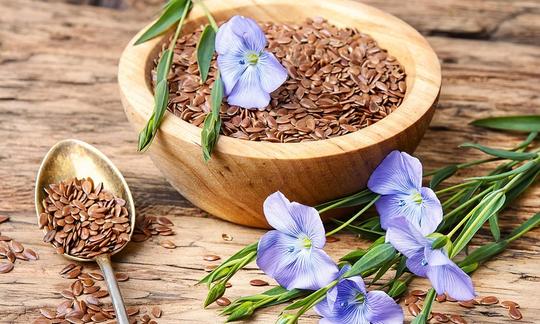

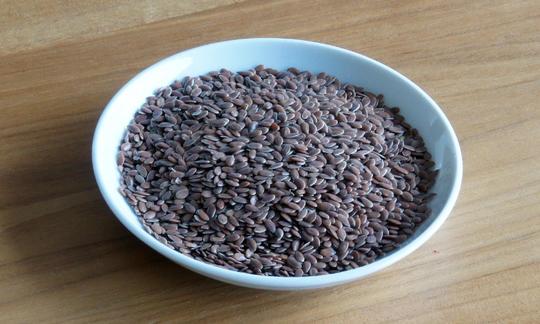

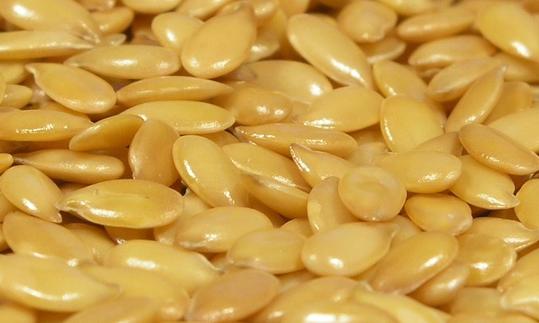

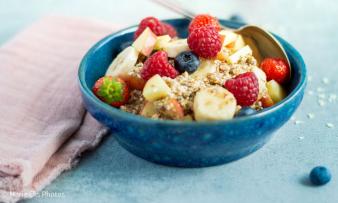
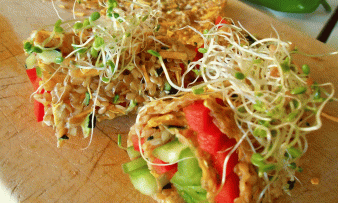


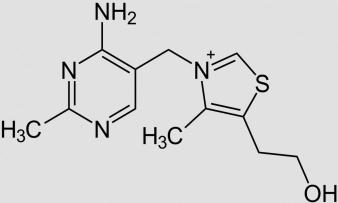



Comments